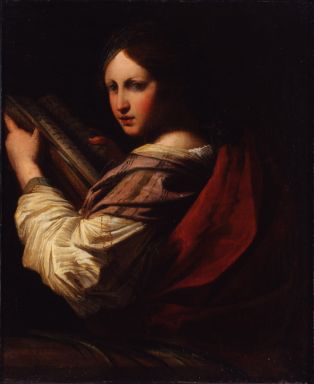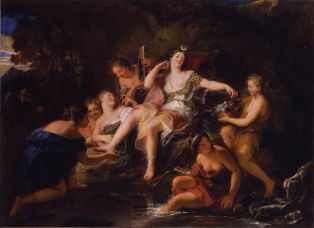- Découvrez les collections
- Notice d'oeuvre



Champigneulle, 1661 ; Paris, 1743
1707
H. 73 cm ; l. 91 cm (sans cadre) ; H. 90,5 cm ; l. 109,3 cm (avec cadre)
M0536_L.I.22
On reconnaît, élégamment disposés dans une apparente négligence, un faisan, deux perdrix rouges, un geai et deux canards colverts, gisant comme au retour d’une chasse. La qualité singulière de cette nature morte a été soulignée pour sa sobriété et la puissance de son coloris, qui préfigurent l’œuvre de Chardin. Elle est aussi symbolique : le couple de perdrix indique traditionnellement la légèreté inutile des mœurs et la superbe du faisan rappelle que la vanité est illusion. Cette œuvre illustre la vogue française du genre animalier, notamment autour de François Desportes et de sa faveur à la cour de Louis XIV. Le roi lui commande deux décors pour la Ménagerie de Versailles (1700) et le château de Marly (1702), sans compter les portraits de ses chiens. Desportes est pensionné, logé au Louvre, et poursuit une carrière internationale brillante, qui donna ses lettres de noblesse à la nature morte animalière en France. Cette reconnaissance s’incarne, en 1699, dans la réception de Desportes à l’Académie comme peintre d’animaux, spécialité inaugurée pour l’occasion, consacrant la réussite d’un genre jusque-là mineur.
A pheasant, two red partridges, a jay and two mallards can be identified, elegantly arranged with artful casualness to look as if they have just been brought back from the hunt. The unusual nature of this still life is emphasized by its restraint and the strong colours used, which prefigure the work of Chardin. It also has a symbolic message: the pair of partridges represent the futile frivolity of social mores and the fine plumage of the pheasant is a reminder that vanity is just an illusion. This work illustrates the French fashion for animal painting, notably the work of François Desportes, and its popularity at the court of Louis XIV. The King commissioned him to paint two decorative schemes for the Menagerie at Versailles (1700) and the Château de Marly (1702), as well as portraits of his dogs. Desportes received a pension and lodgings at the Louvre and pursued a glittering international career, establishing the credentials of animal still life painting in France. This recognition was made tangible in 1699, when Desportes was admitted to the Academy under the designation animal painter, a specialism created specifically for the occasion, celebrating the popularity of a hitherto minor genre.



 Copyright© WebMuseo 2017 - 2024
Copyright© WebMuseo 2017 - 2024